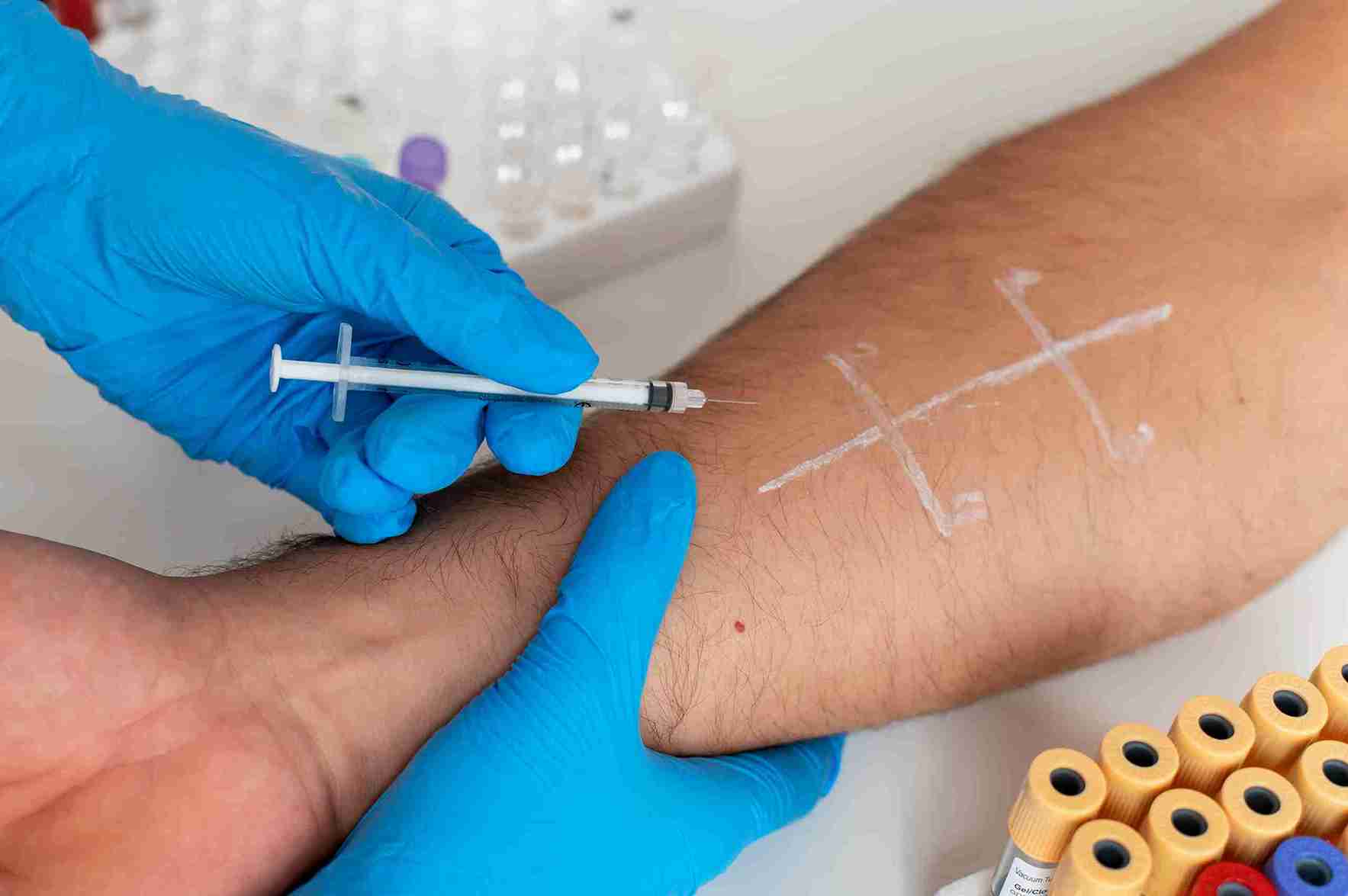
Tuberculosis is a highly contagious disease that spreads through the air. It is caused by the bacteria, Mycobacterium tuberculosis. Tests can help you confirm if you have TB, but what if you are pregnant? Many tests and treatments are not safe during pregnancy. What about the Mantoux test? Can a pregnant woman get this test without harming her baby? Come, let’s find out.

The Mantoux Test is the Mantoux Tuberculin Skin Test taken to confirm a person’s exposure to the Tuberculosis (TB) infection. The test can help detect if you have been exposed to the bacteria and are at risk of developing the disease in the future.
It takes about 2-8 weeks post-exposure for this test to detect the bacteria in the body. The bacteria can stay dormant or active in the body. When active, it will multiply and cause symptoms. The test can only detect the presence of the TB bacterium. It cannot determine if the bacteria will become active or cause any issues. In some cases, past infection or exposure through the BCG vaccine can also produce false-positive test results.
The Mantoux test is a simple and non-invasive procedure. It involves the following steps:
1. The healthcare provider will inject PPD (Purified Protein Derivative) derived from the TB bacterium just beneath the skin surface.
2. The injection site is left undisturbed for the next 48-72 hours.
3. In the event of exposure to the TB bacterium, the skin will have a hypersensitivity reaction.
4. After the required observation period, you must return to the lab for the healthcare professional to inspect the injection site.
5. They will measure the red area of the injection site.
6. This measurement, along with patient medical history and risk factors, will help finalise a diagnosis.
Pregnant women are prone to various infections as their immune system is compromised during pregnancy. The suppression of the immune system during pregnancy prevents it from attacking the developing baby. As a result, the expecting mother can develop tuberculosis among many other infections if necessary precautions are not taken.
A Mantoux test is a skin test that can help determine if the expecting mother is at risk of developing tuberculosis soon. It is not just an active TB infection one should worry about; even latent tuberculosis is dangerous during pregnancy.
If the expecting mother has a TB infection that is not showing any symptoms, she can still pass it on to the baby during pregnancy or childbirth. The baby can develop TB if they are immunocompromised.
With early detection of TB during pregnancy, doctors can start the necessary treatment without any delay, before it impacts the baby. The TB drugs do cross over the placenta and reach the baby, but according to reports so far, they do not cause any issues for the baby.

Yes, the Mantoux test is completely safe during pregnancy. The test involves injecting just a small amount of purified protein derivative from the TB bacterium. This will not cause any harm to the mother or the fetus.
Even if the mother does not have an active TB infection, this test helps determine if she has the bacteria inside her. It helps doctors assess the risk the baby is at. A positive test result does not guarantee that the bacteria will activate and lead to an active infection in the mother or baby. However, not taking the test only increases the risk of a late diagnosis. Diagnosing after the baby starts showing symptoms may be too late for any effective treatment.
Here are a few reasons why you should consider taking the Mantoux test during pregnancy:
● Identify Latent Tuberculosis – The Mantoux test helps screen expectant mothers who may have been exposed to tuberculosis. Latent tuberculosis is when there is exposure but no symptoms. So, if a pregnant woman has been exposed to TB bacteria, there is a high risk of her passing it on to the baby, or the latent TB can develop into active TB if not treated in time.
● Assess Risk – If you fall in the high-risk category, it is advisable to take the test. High risk category includes:
● Timely Treatment – Identifying the presence of bacteria can help start treatment before it can cause any serious damage to the mother or baby.
● Monitoring Treatment – If you are already undergoing treatment for latent TB, the Mantoux test can help assess how effective the treatment is.
The biggest concern for all taking the Mantoux test is – how effective or reliable are the results? When pregnant, it is not safe to undergo treatments unless necessary. So, are the results of the Mantoux test reliable?
A false positive result is possible if you have received the BCG vaccine. The BCG vaccine has been mandatory within a few hours of a baby’s birth for many years now. Your body can react to the PPD in the Mantoux test, leading to a false positive result.
A false negative result is also possible. For individuals with a weak immune system, the body may not react appropriately to the PPD in the Mantoux test. As a result, the size of induration may not be big enough to conclude the test as positive. This is possible even for those with an insufficient immune response despite long-term exposure to the bacteria.

If your Mantoux test results are positive, the doctor will not start treatment immediately. As mentioned earlier, you can also receive a false positive or a false negative result. In case of a positive result with no symptoms (latent TB), the doctor will next ask for a chest X-ray. If they detect evidence of infection, they will initiate the appropriate treatment without delay.
In the case of latent TB during pregnancy, doctors may wait to start treatment. Since there are no symptoms or complications, you can wait for about 2 months postpartum to start the treatment for TB.
However, if you fall into the high-risk category and the doctor suspects the infection can become active at any time soon, or if you are experiencing symptoms, the doctor will start treatment immediately.
The Mantoux test is a simple, non-invasive test. In most cases, it is taken along with other routine tests during pregnancy. Taking the test does not put the mother or baby at any harm. However, failing to take the test in time may lead to a delay in diagnosis or missing the bacterial presence altogether. Both of which can lead to unnecessary complications during or post-pregnancy.


The Mantoux test, also known as the Tuberculin Skin Test (TST), is a non-invasive test that screens for the presence of tuberculosis-causing bacteria. If a person has been exposed to the bacteria, they may or may not develop symptoms. Through this test, the doctors can identify the presence of the bacteria and start treatment before it becomes active or causes complications. The health care professional will inject a small amount of purified protein derivative from the TB bacteria into a spot on the skin. The spot is left undisturbed for about 48-72 hours. In the event of a reaction or hypersensitivity to the injection, the test is considered positive.

In case of an exposure to the TB-causing bacterium, the expecting mother can pass it on to the fetus during pregnancy or childbirth. The TB bacteria, if activated during pregnancy, increase the risk of maternal morbidity, preterm delivery, low birthweight, perinatal death, and cesarean delivery. The Mantoux test can help determine exposure to the bacterium and also help doctors start treatment if necessary, without causing any complications.

The Mantoux test can be taken at any point during pregnancy. Most doctors and hospitals include this in the routine pregnancy tests. The test requires approximately 48-72 hours to read and confirm the results.

Yes, the Mantoux test is a simple skin test. Even if the bacterium is present in the mother, the test will not trigger or activate it. It is an essential diagnostic test that can be very helpful for timely treatment and prevention of complications for both the mother and baby, as well as for the pregnancy itself.